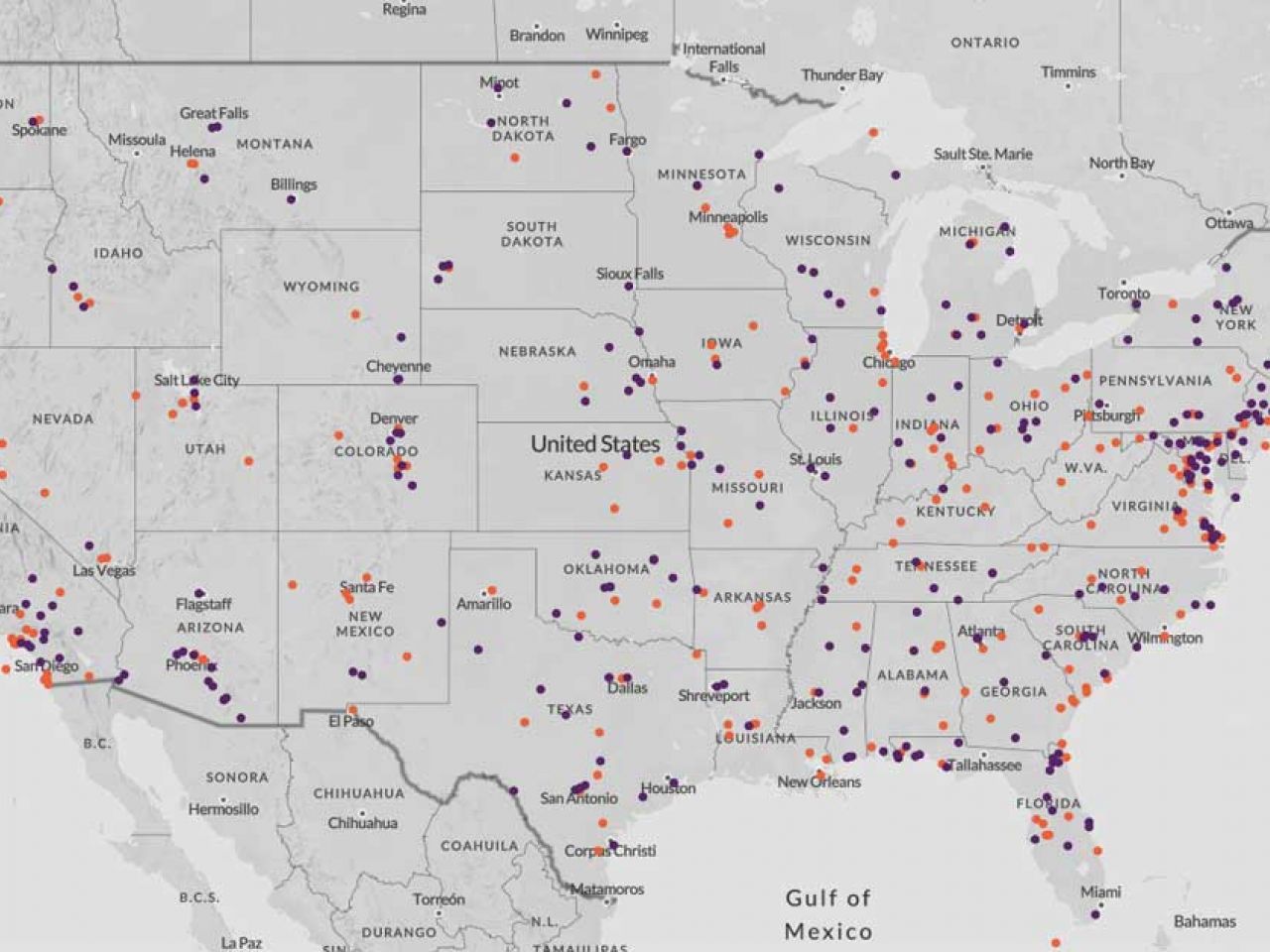
At least two-thirds of the 389 Defense Department sites in the U.S. where the “forever chemicals” known as PFAS have been detected in groundwater are contaminated with levels above new federal health guidelines.
An EWG analysis of DOD data finds 266 military sites have groundwater levels of PFOA or PFOS – two of the most notorious PFAS – at levels deemed unsafe according to the Environmental Protection Agency’s updated advisories. Sixty-nine sites had already reported unsafe levels of these two chemicals in drinking water.
And 104 Pentagon sites have groundwater levels of PFBS, another type of PFAS, far above the agency’s recently announced lifetime health advisory.
In June the EPA announced updated health advisories for PFOA, PFOS, PFBS and another PFAS, GenX. Lifetime health advisories provide information on contaminants in drinking water that can harm people throughout their lives.
The four health advisories are:
- 0.004 parts per trillion, or ppt, for PFOA
- 0.02 ppt for PFOS
- 10 ppt for GenX chemicals
- 2,000 ppt for PFBS
The previous advisory for PFOA and PFOS was 70 ppt. DOD officials say no service members on their bases are being served drinking water with levels above the old health advisory.
The DOD has also repeatedly affirmed it will quickly address the levels of PFOS and PFOA in drinking water above the old health advisory.
The Pentagon has used the previous health advisories to guide drinking water cleanup. But DOD officials have not committed to taking the same approach with the stricter advisories at its bases, or in nearby communities with PFAS contamination.
PFAS are toxic at very low levels and have been linked to serious health problems, including increased risk of cancer and harm to the reproductive and immune systems. PFAS are used to make water-, grease- and stain-repellent coatings for a vast array of consumer goods and industrial applications.
At least 63 DOD installations have had to provide alternative sources of drinking water, such as bottled water and filters, to homes and communities because of PFAS contamination from nearby bases.
In the 2022 National Defense Authorization Act, Congress directed the DOD to test private and public drinking water outside of their bases for PFAS contamination. In many of the communities tested so far, residents have already received water from other sources. But at least nine new communities have begun getting bottled water or filters. That number is expected to grow, since testing is still in the early stages.
If the DOD follows the EPA’s new health advisory, hundreds of homes and communities may need the Pentagon’s help getting safe drinking water.




